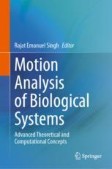Search
Search Results
-
Menstrual Cycle Associated Alteration of Vastus Lateralis Motor Unit Function
BackgroundEstrogen and progesterone are the primary female sex hormones and have net excitatory and inhibitory effects, respectively, on neuronal...

-
Low-load blood flow restriction reduces time-to-minimum single motor unit discharge rate
Resistance training with low loads in combination with blood flow restriction (BFR) facilitates increases in muscle size and strength comparable with...

-
Motor unit-based synergies in a non-compartmentalized muscle
The concept of synergies has been used to address the grou** of motor elements contributing to a task with the covariation of these elements...

-
Fuglevand Model (Rate Coding and Motor Unit Recruitment Model)
For force and sEMG simulation, we introduce the motor unit recruitment and rate coding (Fuglevand) model in this chapter. This model has already been...
-
Acute effects of caffeine or quercetin ingestion on motor unit firing pattern before and after resistance exercise
The aim of the present study was to investigate the acute effect of caffeine or quercetin ingestion on motor unit firing patterns and muscle...

-
Compound muscle action potential (CMAP) scan examination of paretic and contralateral muscles reveals motor unit alterations after stroke
This study presents a novel compound muscle action potential (CMAP) examination of motor unit changes in paretic muscle post stroke. CMAP scan of the...
-
Value of MUNE versus compound muscle action potential in assessing motor unit loss in patients with carpal tunnel syndrome
BackgroundThe most prevalent nerve entrapment disorder, known as carpal tunnel syndrome (CTS), is brought on by wrist-based median nerve compression....

-
A comparison of techniques for verifying the accuracy of precision decomposition-derived relationships between motor unit firing rates and recruitment thresholds from surface EMG signals
Approaches for validating motor unit firing times following surface electromyographic (EMG) signal decomposition with the precision decomposition III...

-
Resistance exercise training and the motor unit
Resistance exercise training (RET) is a key modality to enhance sports performance, injury prevention and rehabilitation, and improving overall...

-
Motor unit firing rates during slow and fast contractions in boys and men
BackgroundMotor unit (MU) activation during maximal contractions is lower in children compared with adults. Among adults, discrete MU activation...

-
Post-activation potentiation and potentiated motor unit firing patterns in boys and men
BackgroundPost-activation potentiation (PAP) describes the enhancement of twitch torque following a conditioning contraction (CC) in skeletal muscle....

-
Longitudinal development of muscle strength and relationship with motor unit activity and muscle morphological characteristics in youth athletes
Neural and morphological adaptations determine gains of muscle strength. For youth athletes, the importance of morphological adaptation is typically...

-
Simulation Study to Investigate the Accuracy of in Vivo Motor-Unit Twitch Force Measurements
Motor-unit behaviour is central to understanding muscle contractile function. Commonly, in vivo experimental measurements of motor-unit twitches are...
-
Motor unit firing rates increase in prepubescent youth following linear periodization resistance exercise training
PurposeThe purpose was to examine the effects of 8-weeks (3 days/week) of linear periodization resistance exercise training (RET) on neuromuscular...

-
Online prediction of sustained muscle force from individual motor unit activities using adaptive surface EMG decomposition
Decoding movement intentions from motor unit (MU) activities to represent neural drive information plays a central role in establishing neural...

-
Reductions in Motor Unit Firing are Associated with Clinically Meaningful Leg Extensor Weakness in Older Adults
Weakness, one of the key characteristics of sarcopenia, is a significant risk factor for functional limitations and disability in older adults. It...

-
Modulation of spontaneous motor unit potentials by a new motor cortical magnetic stimulation method in amyotrophic lateral sclerosis
BackgroundPatients with amyotrophic lateral sclerosis (ALS) show altered cortical excitability. In this study, we measure modulation of spontaneous...

-
Sex differences in laterality of motor unit firing behavior of the first dorsal interosseous muscle in strength-matched healthy young males and females
PurposeThe purpose of this study was to compare laterality in motor unit firing behavior between females and males.
MethodsTwenty-seven subjects (14...

-
Neuromuscular junction pathology is correlated with differential motor unit vulnerability in spinal and bulbar muscular atrophy
Spinal and bulbar muscular atrophy (SBMA) is an X-linked, neuromuscular neurodegenerative disease for which there is no cure. The disease is...

-
Different discrete motor-unit activation patterns in the flexor carpi radialis in boys and men
BackgroundLower activation of higher threshold (type-II) motor units (MUs) has been suggested in children compared with adults. We examined...

